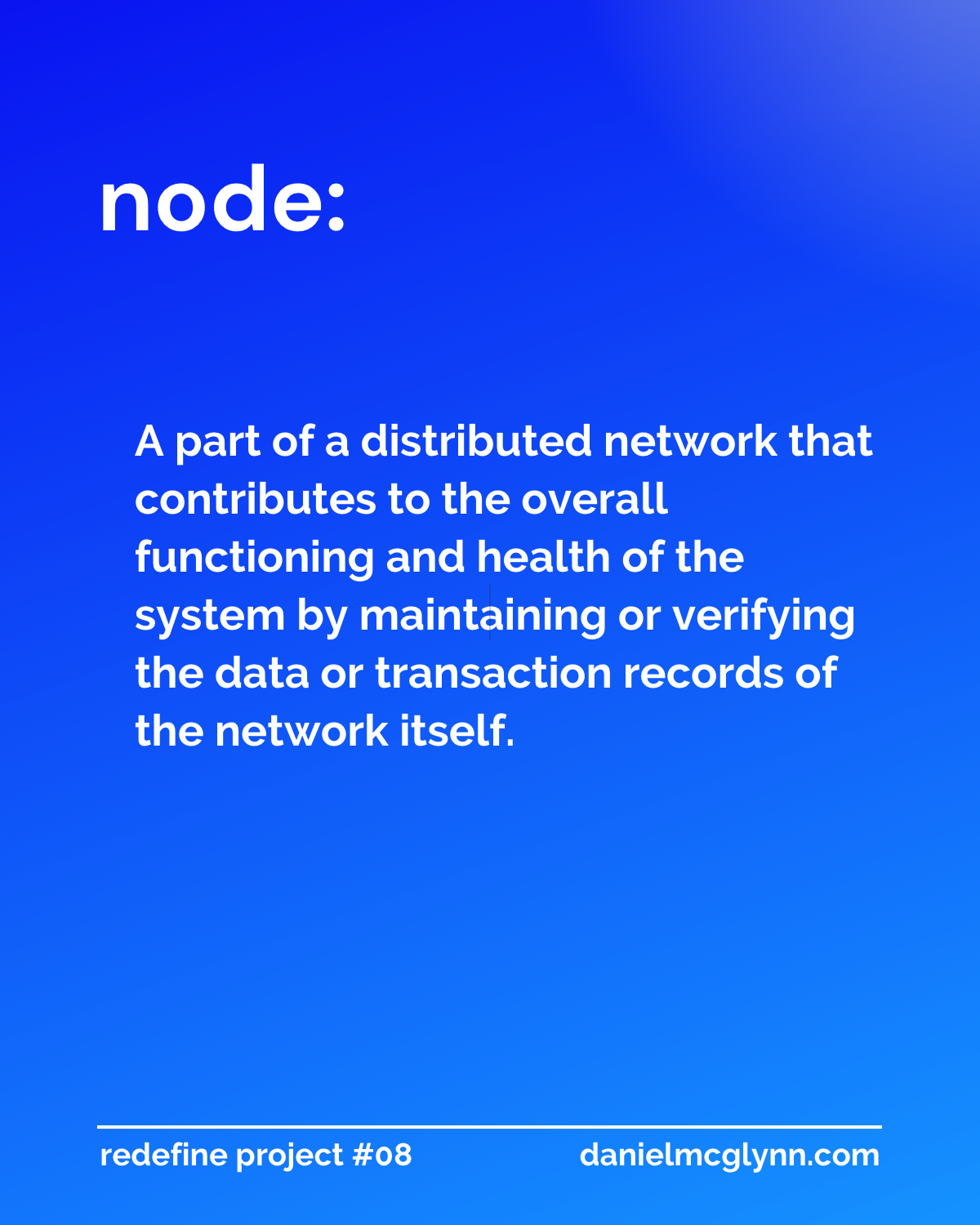A blockchain node plays a critical role in running and maintaining a distributed network.
There are different kinds of nodes that serve various functions including validating transaction details and recording blocks of data to the blockchain's ledger.
If enough nodes accept new updates then the network adapts to the new updates.

Nodes are an important part of decentralized computing.
Rather than relying on a traditional single database (often controlled by a company or organization), collectively nodes in a network can create a more powerful and resilient computing environment. It also means there is not one on/off switch — and the more nodes contributing to a network, the more secure the network becomes.
Common types of blockchain nodes include:
- Full nodes: A full node runs and stores a copy of the entire blockchain. Running a full node helps secure the network. It takes approximately 500 GB of storage to host a bitcoin full node (as of 2022). A full node will verify transaction details before adding a new block of data to the network’s ledger.
- Miner/validator node: This kind of node will vary depending on how the blockchain creates new blocks (the two most popular methods are proof-of-work, like Bitcoin, and proof-of-work, like Ethereum). In exchange for confirming transaction details and assembling new blocks of data, the miner or validator nodes earn a block reward, which is also how new currency enters circulation.
- Lightweight nodes, or pruned nodes: These nodes allow network participation without having to download the entire history of a blockchain. By comparison, a lightweight node, or a pruned node, might contain 500 MB of data, or the equivalent of a couple of days of transactions.
While running a full node for a blockchain like Bitcoin used to take a high level of tech chops, increasingly there are new products and services that make it easier and more accessible for people to contribute — and help secure — the network.